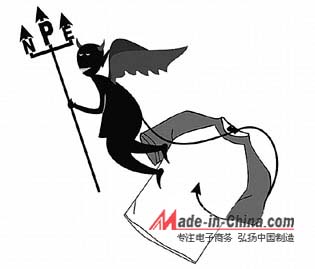 After ZARA and H&M were exposed to quality problems such as discoloration of clothes and excessive composition, many big names fell into the "quality door." On August 23, 2011, Greenpeace, an international environmental organization, released the report "Poisoning in Clothing - Investigation of Remains of Toxic and Harmful Substances in Global Brand Clothing". The report states that Li Ning, NIKE, Converse, Uniqlo, and Adidas The products of 14 famous brands contain toxic and hazardous substances.
After ZARA and H&M were exposed to quality problems such as discoloration of clothes and excessive composition, many big names fell into the "quality door." On August 23, 2011, Greenpeace, an international environmental organization, released the report "Poisoning in Clothing - Investigation of Remains of Toxic and Harmful Substances in Global Brand Clothing". The report states that Li Ning, NIKE, Converse, Uniqlo, and Adidas The products of 14 famous brands contain toxic and hazardous substances. This material, which is known as NPE (Nonylphenol Polyoxyethylene Ether), is a material that is involved in the whirlpool of famous brands. What is NPE? What harm does it have?
NPE is widely used in the textile industry for printing, dyeing and cleaning processes. It is a very important non-ionic surfactant with good wetting, emulsification, dispersion, decontamination and anti-static capabilities. it is good. NPE is widely used in detergents, textiles, pesticides, coatings, leather, building materials, paper and Other industries. NPE is a polymer that is not dangerous in itself, but once NPE enters the environment, it quickly decomposes into a more toxic environmental hormone, NP, which is nonylphenol. NP is persistent and bioaccumulative. That is to say, once it is discharged into the environment, it will exist for a long time, and it can enter the food chain, and enlarges step by step through the food chain. At the same time, it also has the effect of mimicking estrogen, so once it enters the body, it will affect the normal reproduction and development of the organism, which can lead to a decrease in the number of sperm in human males. NPE is recognized worldwide as an environmental hormone. Research shows that even if the concentration of this substance is low, it is extremely dangerous.
From April to May 2011, Greenpeace purchased 78 samples of 15 clothing brands in 18 countries including China, the United Kingdom, and Argentina, including sportswear, casual wear and footwear. The origin of these samples involved 13 textile producing countries such as China, Bangladesh, Indonesia, Sri Lanka, and Thailand. Greenpeace sent the samples to a qualified third-party laboratory for testing. The results showed that 2/3 of the samples including Adidas and Li Ning were detected to contain NPE. Among them, Li Ning's four samples, Younger's three samples, and Abercombie&Fitch's three samples all detected NPE, and were three "all-armed" brands.
NPE was detected in the products of 14 clothing brands, which undoubtedly attracted people's attention.
Among the apparel brands involved, Li Ning is the fastest-speaking Chinese company. On August 22 and 24, they issued a statement on the official website, not only focusing on the issue of whether the product meets EU REACH standards. The answer also made a positive commitment to achieve environmentally friendly emissions in the supply chain.
On the evening of August 23rd, Adidas issued a statement saying that the test results mentioned in the report indicated that the NPE concentration of Adidas was far below the target value, and most of the Adidas products tested did not detect NPE (in 9 samples None of the 5 items contained NPE). Adidas has strictly adhered to the standard of NPE concentration of 100ppm, which is the best measure implemented in the industry. Nike and Hummer reacted positively, saying that all toxic and hazardous substances in their supply chains will be phased out by 2020, and an open plan of action will be formulated in the near future.
The person in charge of the Youngor Group Propaganda Department told the reporter of the “Daily Economic News†that they saw the report the first time they responded. She said, “The three products have passed the third-party testing report and are in line with GB18401. "Standard," however, "We sent the sample to a third-party inspection for inspection again, but the results did not come out. At the same time, it also put forward requirements for the upstream supply chain."
Nike and Hummer reacted positively, saying that all toxic and hazardous substances in their supply chains will be phased out by 2020, and an open plan of action will be formulated in the near future.
Professor Dong Yanming from Xiamen University’s School of Materials said that based on current knowledge, NPEs that are left on clothing, whether due to fabric dyeing or washing, will not directly harm the human body. There is no evidence that under wear conditions, NPE will be absorbed or broken down into toxic NPs.
Chaoyang ** dermatologist Cao Mei reminded that the new clothes must be washed and sun. Washing fresh clothes with salt water can disinfect, sterilize and prevent fading; cotton heat-resistant clothing can also be disinfected with boiling water. Exposure to direct sunlight for more than 2 hours allows formaldehyde and other toxic gases to evaporate.
After the “Toxic Clothing Door†incident occurred, the reporter found during the visit to the counters of these famous brands that “Drug Gate†did not affect the sales volume. The clerk said that they were unaware of it and had not received any information from consumers yet. Complaints or company-related notices. Some consumers expressed that after the “Toxic Clothing Door†incident, they still insisted on choosing branded clothing. They believe that well-known brands should continue to survive and will definitely rectify their production after the event is exposed. This shows that consumers trust Li Ning, NIKE and other branded apparels. The degree is relatively high.
Jeans Pants Belts,Men Jeans Pants Belts,Oem Custom Men Belt
Worldin Industrial Limited Company , http://www.dgbelt.com